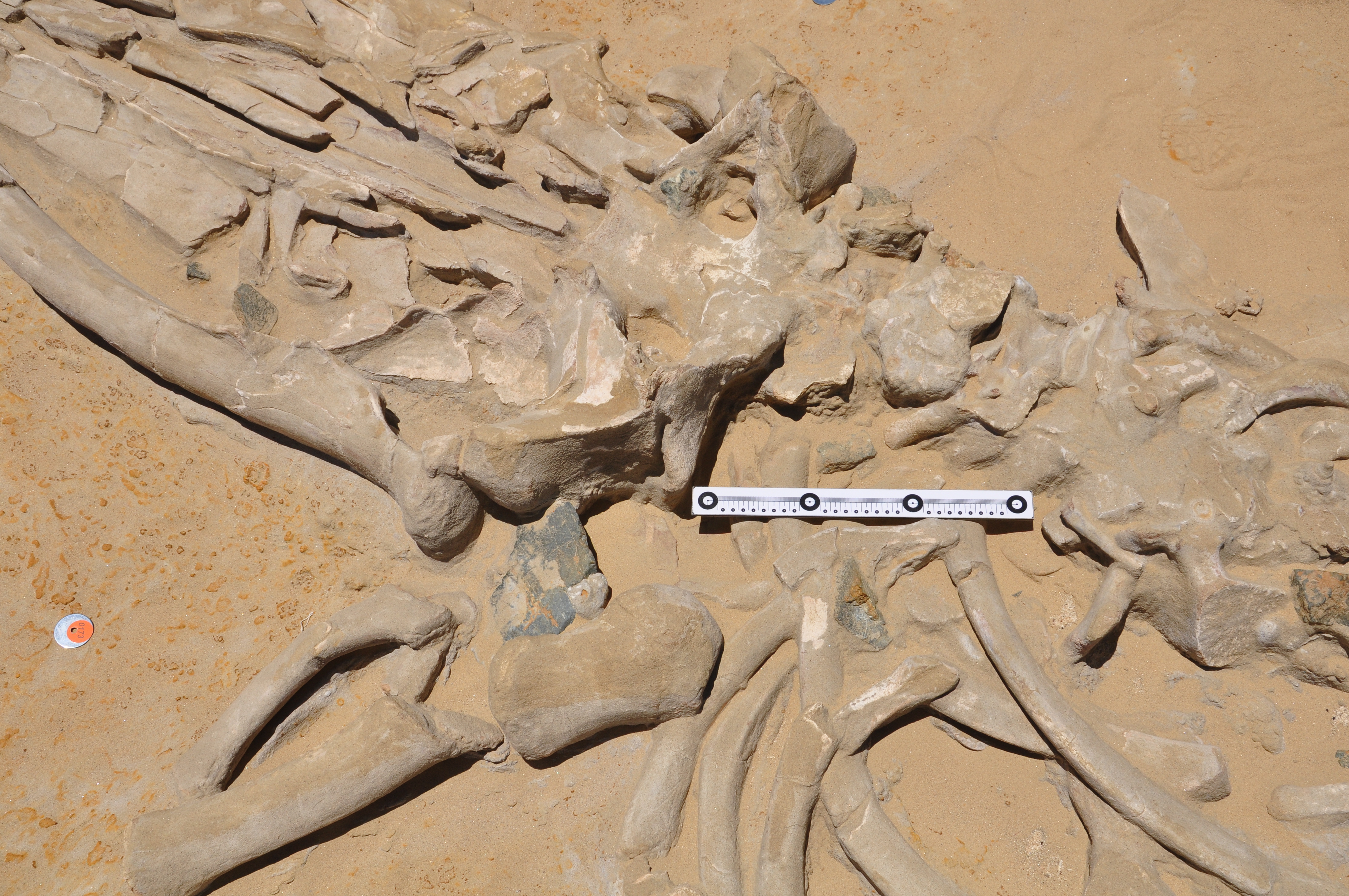Science News
Reason Behind Ancient Whale Graveyard
February 27, 2014
by Molly Michelson

In late 2010, construction workers in the Atacama Desert in Chile discovered several whale fossils while expanding the very busy Pan-American Highway. The number of fossils was so large that construction halted for a few months in order for scientists to document the area.
At the time, a team of researchers from the Smithsonian and various Chilean institutions recorded the remains of ten kinds of marine vertebrates from the site, named Cerro Ballena—Spanish for “whale hill.” In addition to the skeletons of more than 40 large baleen whales that dominated the inventory, the team documented the remains of a species of sperm whale and a walrus-like whale, both of which are now extinct. They also found skeletons of billfishes, seals and aquatic sloths.
This ancient graveyard dates to the Miocene, around six-to-nine million years ago, and hints at repeated mass strandings—the fossils were actually uncovered from four separate layers.
According to a paper published by the team this week in the Proceedings of the Royal Society B,
Marine mammal mass strandings have occurred for millions of years, but their origins defy singular explanations. Beyond human causes, mass strandings have been attributed to herding behavior, large-scale oceanographic fronts and harmful algal blooms.
So what was the culprit millions of years ago in northern Chile, at four completely different times?
To find out, the researchers looked into the more recent past. “There are a few compelling modern examples that provide excellent analogs for the patterns we observed at Cerro Ballena,” says Nicholas Pyenson, paleontologist at the Smithsonian and lead author of the research. “In particular, one case from the late 1980s when more than a dozen humpback whales washed ashore near Cape Cod, with no signs of trauma, but sickened by mackerel loaded with toxins from red tides. Harmful algal blooms in the modern world can strike a variety of marine mammals and large predatory fish. The key for us was its repetitive nature at Cerro Ballena: no other plausible explanation in the modern world would be recurring, except for toxic algae, which can recur if the conditions are right.”
Harmful algal blooms commonly occur along the coasts of continents: they are enhanced by vital nutrients, such as iron, released during erosion and carried by rivers flowing into the ocean. The iron-rich Andes that trace the west coast of South America create runoff that has long provided the ideal conditions for harmful algal blooms to form. For more than 20 million years, as a matter of fact!
The scientists believe that toxins generated by harmful algal blooms most likely poisoned marine life in the area through ingestion of contaminated prey or inhalation, causing relatively rapid death at sea. Through evidence of the fossils’ positions at the site, the team further concludes that the carcasses then floated toward the coast, where they were washed into a tidal flat by waves. Once stranded on the tidal flat, the dead or dying animals were protected from marine scavengers and eventually buried by sand. Because there are four layers at Cerro Ballena, this pathway from sea to land occurred four different times during a period of 10,000 to 16,000 years in the same area.
Mystery solved.
You can do a little digging at the site, too. The Smithsonian has a website with the archived digital data from Cerro Ballena, where you can download or interact with 3-D models of the fossil whale skeletons, scan Google Earth maps of the excavation quarries, look at a vast collection of high-resolution field photos and videos, or take 360-degree tours of the site.